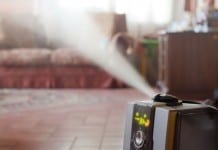WASHINGTON, D.C. – The United States Department of Health and Human Services reports this morning that there has been a recent spike nationwide in the condition known as hypodilaudidemia.
 Spokeswoman Dr. Penni Pinscher, DrPH addressed the media at an emergency press conference called at HHS headquarters. “The number of patients who have presented to emergency rooms, urgent care centers, and primary care providers with critically low dilaudid levels in their blood has reached the level of epidemic proportions.”
Spokeswoman Dr. Penni Pinscher, DrPH addressed the media at an emergency press conference called at HHS headquarters. “The number of patients who have presented to emergency rooms, urgent care centers, and primary care providers with critically low dilaudid levels in their blood has reached the level of epidemic proportions.”
The dangerous condition seems to have the greatest detriment on patients whose comorbidities include malingering. Most concerning is that many of these patients on workup have been found to have serum dilaudid levels as low as 0.01 ng/dL requiring emergent IV administration of hydromorphone, a generic drug often used off label for this condition.
Health and Human Services is working in conjunction with the CDC with the hopes that the collaboration will lead to faster resolution of this critical situation
Members of the press were encouraged to offer questions at the end of the press conference. The following issues were addressed after inquiry from the media:
Q: This chemical, “diladid” is it produced anywhere in the body
A: It is pronounced “dilaudid”, and no, it is produced in Chicago.
Q: This condition, where the body is low in diladude, is there a lab test to confirm it.
A: Again, pronounced, Die-lod-id…. And no, diagnosis is based on history: anyone with an allergy to Toradol is highly susceptible, likely due to a genetic pre-disposition, more research is needed. Also a subset of patients whose roommates steal pills but not TVs, Video game systems, nor gold bullion; seem at risk.
Q: Is there any prevention for hypodilantinemia? A vaccine perhaps?
A: Hypo-die-lawd-i-demia, and you know full well if there was a vaccine it would be worthless thanks to rampant misinformation. Sadly there is little hope for prevention, those at highest risk often do not have primary care providers who could monitor their serum dilaudid levels. If they have been seen by an ongoing provider, typically there has been some sort of falling out that lead to the patient being dismissed from the practice.
Current recommendations from HHS/CDC at this time is to increase supply of dilaudid to meet the expected demand of phase two according to Dr. Pinscher: increased distribution of dilaudid in the community. “It is our hope within the decade to have dilaudidation of many, if not all of, the major water supplies in the United States. If we can get fluoride in there, we can get dilaudid in there, it is just a matter of pull







